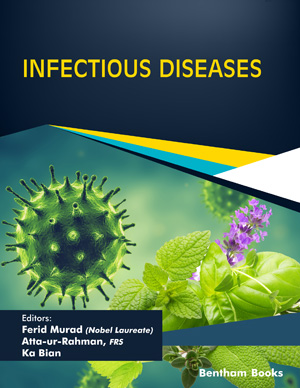Abstract
Background: Cardiac autonomic dysfunction is associated with hypertension and exercise training (ET) in healthy individuals is found to improve cardiac autonomic modulation (CAM). However, the effects of physical exercise on CAM in hypertensive individuals are under debate.
Objective: The aim of the review is to systematically evaluate the literature on the effects of physical exercise on CAM in hypertensive individuals and analyse comparative differences in the effects of exercise between hypertensive and normotensive individuals.
Methods: Electronic databases, such as Pubmed, PEDro, Scopus, and Web of Science, were systematically searched from inception up to February, 2022, evaluating the effect of ET on CAM either by heart rate variability (HRV), baroreflex sensitivity or heart rate recovery. Fifteen studies were included in the review. The risk of bias was assessed using the Cochrane risk of bias tool version 2 and the risk of bias in studies of intervention (ROBINS-I) tool. The overall quality of evidence was assessed using the grading of recommendations, assessment, development, and evaluation approach. Ten studies were included in the quantitative analysis. The meta-analysis and sensitivity analysis were performed using review manager 5.4.1; publication bias was assessed using Jamovi 2.2.5 software.
Results: The qualitative analysis revealed low to moderate certainty of evidence for ET and moderate for aerobic training. For the effect of overall ET, the analysis revealed that the standardized mean differences (SMD) showed a significant effect of ET on HF (SMD 1.76, p = 0.04) and RMSSD (SMD 1.19, p < 0.0001) and a significant decrease in LF (SMD -1.78, p = 0.04). Aerobic training revealed nonsignificant improvement in HRV parameters. In the comparative analysis, ET did not show a significant difference in improvement between hypertensive and normotensive individuals.
Conclusion: This review suggests an improvement in CAM with physical exercise in hypertensive individuals, but the overall effect of ET in hypertensive individuals must be interpreted with caution as the robustness of the data is compromised in the sensitivity analysis of the trials. High-quality future trials focusing on different modes of ET interventions are needed to strengthen the findings of the present review.
Graphical Abstract
[http://dx.doi.org/10.1016/S0140-6736(18)32225-6] [PMID: 30496105]
[http://dx.doi.org/10.1371/journal.pmed.1000058]
[http://dx.doi.org/10.1161/CIRCRESAHA.114.302524] [PMID: 24855203]
[PMID: 15104026]
[http://dx.doi.org/10.1161/01.HYP.0000158312.63381.c1] [PMID: 15738344]
[http://dx.doi.org/10.21203/rs.3.rs-1284632/v1]
[http://dx.doi.org/10.1007/s11102-013-0482-4] [PMID: 23553172]
[http://dx.doi.org/10.1007/s001250050851] [PMID: 9447956]
[http://dx.doi.org/10.1186/s11556-021-00278-6] [PMID: 34789148]
[http://dx.doi.org/10.1007/s10286-018-0558-3] [PMID: 30141031]
[http://dx.doi.org/10.1111/j.1751-7133.2011.00282.x]
[http://dx.doi.org/10.1016/j.obmed.2021.100383]
[http://dx.doi.org/10.1136/BMJ.B2535]
[http://dx.doi.org/10.1136/bmj.l4898] [PMID: 31462531]
[http://dx.doi.org/10.1002/14651858.ED000148]
[http://dx.doi.org/10.1002/jrsm.1411]
[http://dx.doi.org/10.1136/bmj.i4919]
[http://dx.doi.org/10.1080/00401706.1989.10488618]
[http://dx.doi.org/10.1136/bmj.327.7414.557]
[http://dx.doi.org/10.1519/JSC.0000000000001009] [PMID: 25992658]
[http://dx.doi.org/10.1186/s12967-018-1615-3] [PMID: 30165858]
[http://dx.doi.org/10.1038/s41371-020-0298-4] [PMID: 31932699]
[http://dx.doi.org/10.1007/s00421-020-04525-z] [PMID: 33070245]
[http://dx.doi.org/10.1080/10641963.2016.1200601] [PMID: 27936947]
[http://dx.doi.org/10.1519/JSC.0000000000001995]
[http://dx.doi.org/10.6061/clinics/2021/e1971] [PMID: 33503175]
[http://dx.doi.org/10.1089/acm.2016.0124] [PMID: 27656953]
[http://dx.doi.org/10.1016/j.jesf.2018.11.002] [PMID: 30740133]
[http://dx.doi.org/10.1016/j.ijcard.2011.09.069] [PMID: 21985749]
[http://dx.doi.org/10.1016/0140-6736(91)93056-F] [PMID: 1674761]
[http://dx.doi.org/10.1111/j.1748-1716.2008.01897.x] [PMID: 18774947]
[http://dx.doi.org/10.1590/1414-431x20187310] [PMID: 30462769]
[http://dx.doi.org/10.1097/MBP.0000000000000545] [PMID: 34001759]
[http://dx.doi.org/10.1089/jwh.2011.2932] [PMID: 21967166]
[http://dx.doi.org/10.1177/1099800408324853] [PMID: 19150992]
[http://dx.doi.org/10.1177/1099800412461562] [PMID: 23034540]
[http://dx.doi.org/10.1111/j.1600-0838.2009.01089.x] [PMID: 20136764]
[http://dx.doi.org/10.1111/j.1469-445X.2002.tb00055.x]
[http://dx.doi.org/10.1016/j.ihj.2018.03.005] [PMID: 30595274]
[http://dx.doi.org/10.3923/jms.2008.350.356]
[http://dx.doi.org/10.1519/JSC.0000000000003182]
[http://dx.doi.org/10.1161/HYPERTENSIONAHA.106.085548]
[http://dx.doi.org/10.1046/j.1365-2281.1997.01010.x] [PMID: 9015656]
[http://dx.doi.org/10.1038/hr.2011.162] [PMID: 21956728]
[http://dx.doi.org/10.3389/fnins.2020.00841] [PMID: 33013285]
[PMID: 26441677]
[http://dx.doi.org/10.1371/journal.pone.0157557]
[http://dx.doi.org/10.1016/j.pcad.2019.01.004]
[http://dx.doi.org/10.3920/CEP210009]
[http://dx.doi.org/10.1152/jappl.1985.58.3.785] [PMID: 3980383]
[http://dx.doi.org/10.1152/jappl.1985.58.3.785]
[http://dx.doi.org/10.1096/fj.99-0896rev] [PMID: 10973917]
[http://dx.doi.org/10.1016/j.bjpt.2018.09.010]
[http://dx.doi.org/10.1080/02640414.2012.762984]
[http://dx.doi.org/10.1080/02640414.2012.762984]
[http://dx.doi.org/10.3389/fphys.2016.00265]
[http://dx.doi.org/10.1055/s-0029-1225329]
[http://dx.doi.org/10.1080/10641960802279132]
[http://dx.doi.org/10.1152/ajpheart.00558.2009] [PMID: 20207818]
[http://dx.doi.org/10.1161/01.CIR.93.5.1043]















